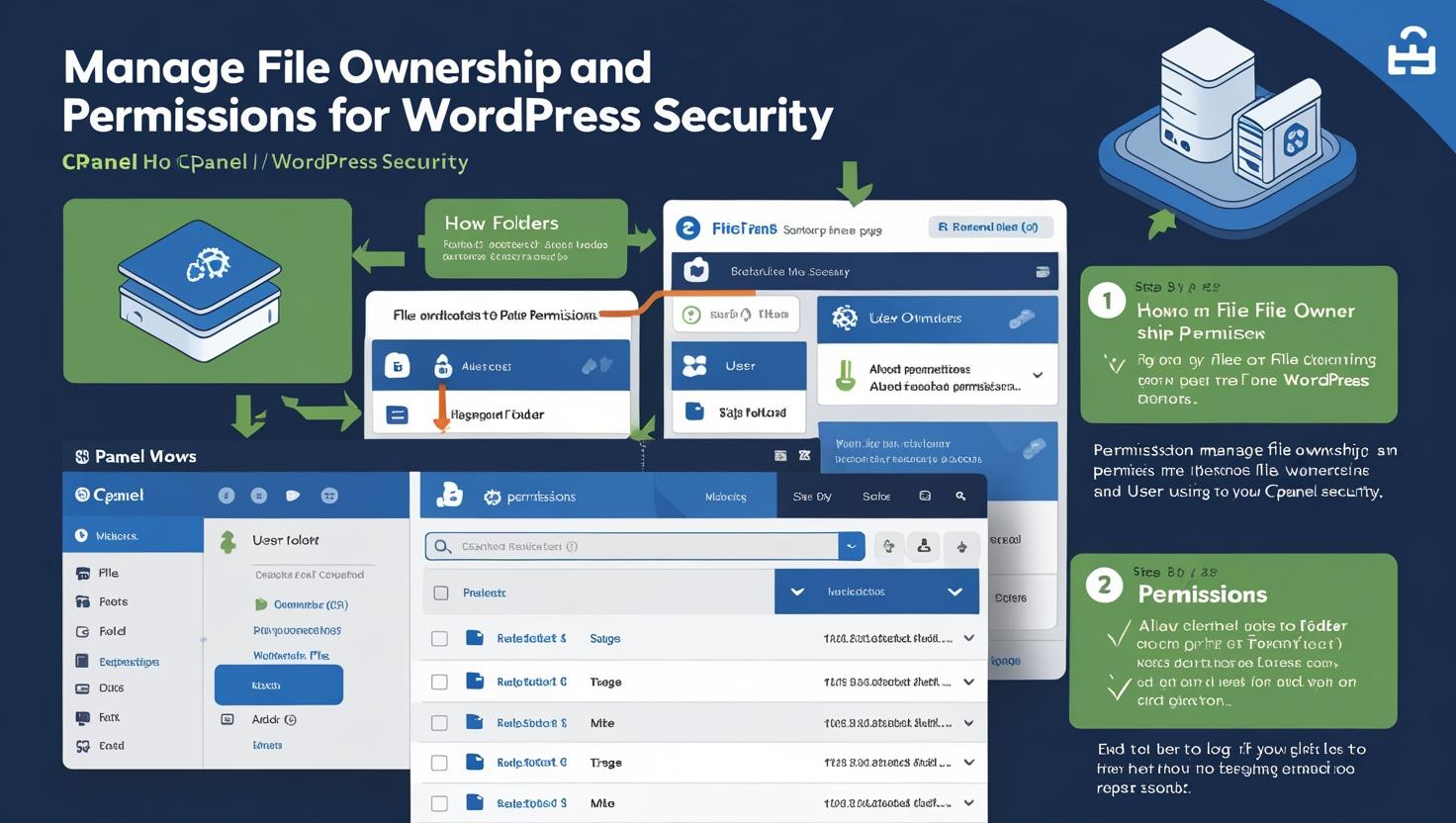
How to Manage File Ownership and Permissions for WordPress Security in cPanel
How to Manage File Ownership and Permissions for WordPress Security in cPanel
Why File Ownership and Permissions Matter
Improper file permissions and ownership can lead to major vulnerabilities in WordPress. Hackers can exploit writable files or directories to inject malicious code. Ensuring that only necessary access is granted is key to securing your site.
Understanding File Permissions
- Read (r): Allows viewing the contents of a file or directory.
- Write (w): Allows modifying or deleting a file or directory.
- Execute (x): Allows running a file (for scripts) or accessing a directory.
Permissions are represented in three groups:
- User (Owner)
- Group
- Others (Public)
Recommended WordPress File Permissions
- Files: 644 (read/write for owner, read-only for group and others)
- Directories: 755 (read/write/execute for owner, read/execute for group and others)
- wp-config.php: 440 or 400 for added security
How to Change File Permissions in cPanel
- Log in to your cPanel account.
- Go to File Manager.
- Navigate to your WordPress root directory (usually
public_html). - Right-click on a file or folder and choose Change Permissions.
- Set the appropriate values (e.g., 644 for files, 755 for folders) using the checkboxes.
- Click Save.
Changing Permissions Using Terminal (Advanced)
If you have SSH access enabled in your cPanel hosting account, you can set permissions using terminal:
cd public_html
find . -type d -exec chmod 755 {} \;
find . -type f -exec chmod 644 {} \;
chmod 400 wp-config.php
Checking and Fixing File Ownership (Optional)
Ownership issues often arise after migrations or incorrect file uploads. If you notice permission errors in WordPress:
-
- Contact your hosting support to reset ownership to the correct user (usually your cPanel username).
- Via SSH (if allowed):
chown -R yourusername:yourusername public_htmlSecurity Tips
- Avoid setting any folder or file to 777.
- Limit plugin and theme uploads from unknown sources.
- Scan your site regularly for malware using tools like ImunifyAV in cPanel.
- Back up your site before making permission changes.
Conclusion
Maintaining correct file permissions and ownership is a foundational step in WordPress security. By regularly reviewing and adjusting access settings using cPanel’s File Manager or terminal, you can prevent unauthorized changes and vulnerabilities.